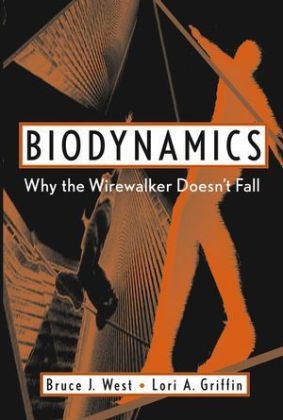
Biodynamics
Wiley-Liss Inc.,U.S. (Verlag)
978-0-471-34619-7 (ISBN)
You can never step in the same river twice, goes the old adage of philosophy. An observation on the transitory nature of fluids in motion, this saying also describes the endless variations researchers face when studying human movement. Understanding these biodynamics-why the wirewalker doesn't fall-requires a grasp of the constant fluctuations and fine tunings which maintain balance in the complex, fluid system of human locomotion.
Taking a comprehensive approach to the phenomenon of locomotion, Biodynamics: Why the Wirewalker Doesn't Fall integrates physical laws and principles with concepts of fractals, chaos, and randomness. In so doing, it formulates a description of both the large-scale, smooth aspects of locomotion and the more minute, randomized mechanisms of this physiological process.
Ideal for beginners in this subject, Biodynamics provides an elegant explanation without assuming the reader's understanding of complex physical principles or mathematical equations. Chapter topics include:
* Dimensions, measurement, and scaling
* Mechanics and dynamics
* Biometrics
* Conservation of momentum
* Biomechanics
* Bioelectricity
* Bioenergetics
* Fluid mechanics and dynamics
* Data analysis
* Biostatistics
Packed with problem sets, examples, and original line drawings, Biodynamics is an invaluable text for advanced undergraduates, graduate students, and instructors in medicine, biology, physiology, biophysics, and bioengineering.
Dr. Bruce J. West has been an active research scientist in industry, a university professor and department chair of physics, and he is presently a chief scientist in mathematics for the Army. Dr. West’s career spans 30 years and he has over 310 research publications. Dr. West is a Fellow of the American Physical Society, an Army Research Laboratory Fellow, and he has won numerous awards for outstanding research. His research specialization has been the application of nonlinear dynamics systems theory to a variety of physical and biomedical phenomena. His research has addressed general questions about what we can and cannot know about dynamical complex adaptive systems. Dr. Lori Griffin holds a National Research Council Fellowship at Duke University. Her research focuses on human locomotion.
Preface. PART I: INTRODUCTION TO SCIENCE.
Chapter 1. Ways of Knowing.
Chapter 2. Ways of Thinking.
Chapter 3. Mechanics—A First Look.
PART II: DYNAMICS, THE FUNDAMENTALS OF MOTION.
Chapter 4. Measures of Motion.
Chapter 5. Energy—The Source of It All.
Chapter 6. Linear Physics.
Chapter 7. Biomechanics 1—Rectilinear Motion.
Chapter 8. Biomechanics 2—Rotational Motion.
PART III: FIELDS—HOW COMPLEX SYSTEMS MOVE.
Chapter 9. Bioelectricity—Signals in the Body.
Chapter 10. Molecules and Metabolism—Unseen Causes.
Chapter 11. Bioenergetics—The Dynamics of Heat.
Chapter 12. Fluids at Rest.
Chapter 13. Fluids in Motion.
PART IV: DATA ANALYSIS—WHAT WE CAN LEARN FROM MEASUREMENTS.
Chapter 14. Biostatistics 1—When Things Converge.
Chapter 15. Biostatistics 2—When Things Diverge.
Chapter 16. Biodynamic Time Series 1—Stride Rate Variability.
Chapter 17. Biodynamic Time Series 2—Heart Rate Variability.
Chapter 18. Biodynamic Time Series 3—Breathing Rate Variability.
Epilogue.
PART V: MICROBIOGRAPHIES—THE SCIENTISTS WHO MADE HISTORY.
References.
Index.
| Erscheint lt. Verlag | 6.1.2004 |
|---|---|
| Zusatzinfo | Drawings: 108 B&W, 0 Color; Tables: 11 B&W, 0 Color |
| Verlagsort | New York |
| Sprache | englisch |
| Maße | 183 x 263 mm |
| Gewicht | 993 g |
| Einbandart | gebunden |
| Themenwelt | Studium ► 1. Studienabschnitt (Vorklinik) ► Physiologie |
| Naturwissenschaften ► Biologie | |
| ISBN-10 | 0-471-34619-5 / 0471346195 |
| ISBN-13 | 978-0-471-34619-7 / 9780471346197 |
| Zustand | Neuware |
| Haben Sie eine Frage zum Produkt? |
aus dem Bereich


